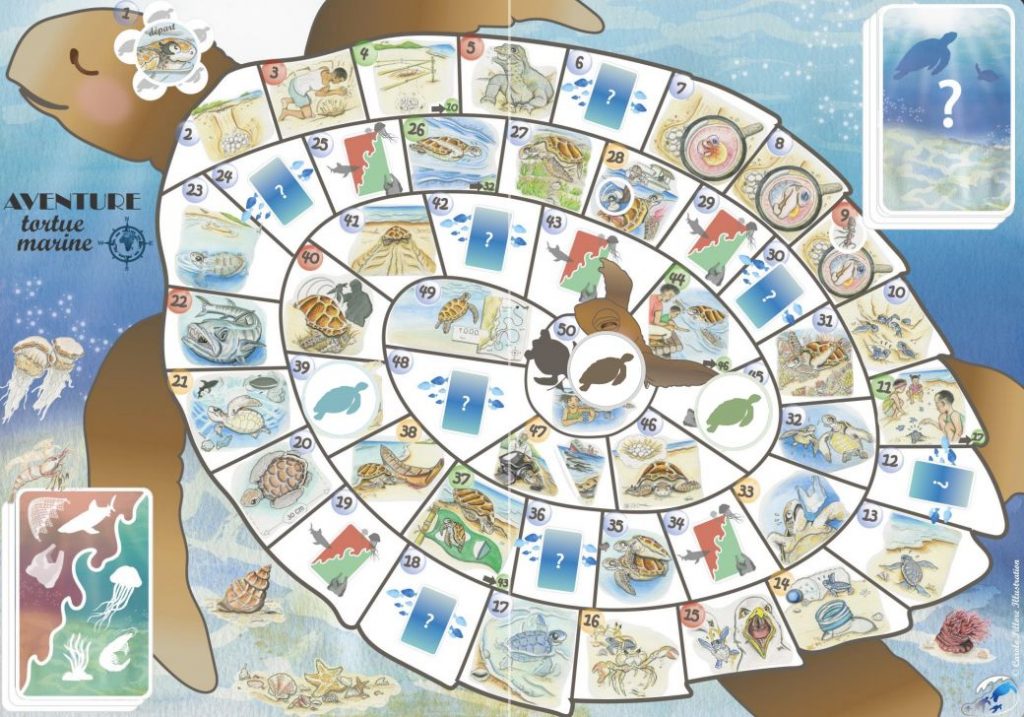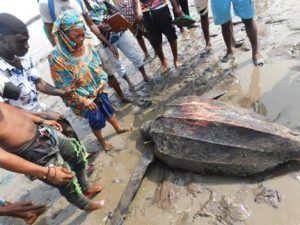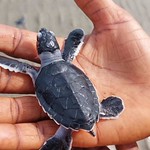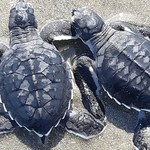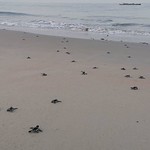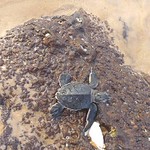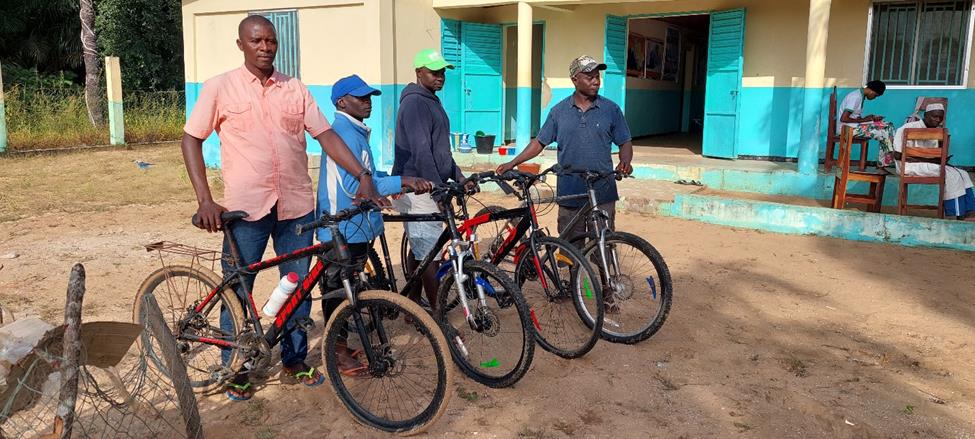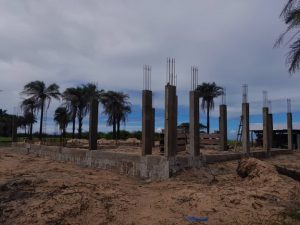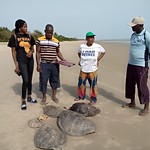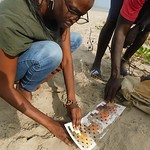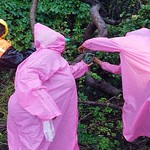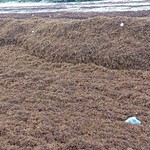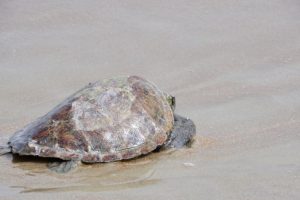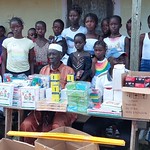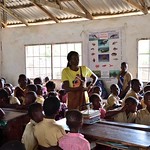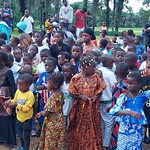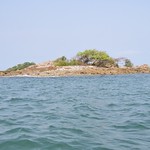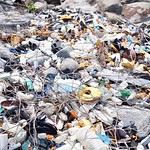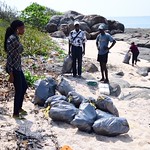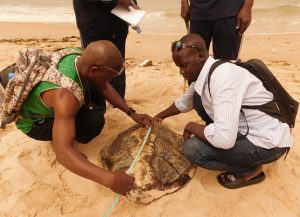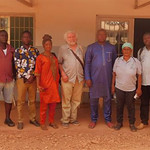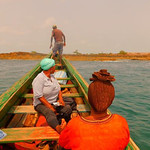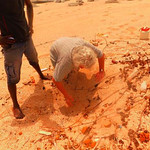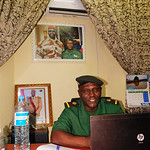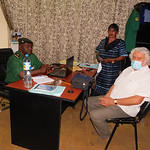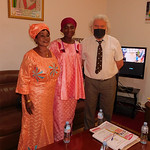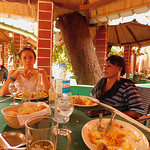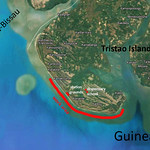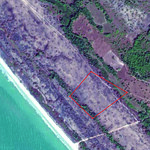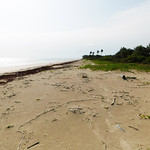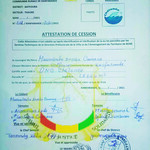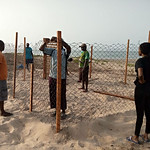Small Grant Login

0% of this project has been implemented.
March 1, 2021
June 30, 2024
Project Summary
One hundred miles from Conakry, the capital of Guinea, lies the island archipelago of Tristao where endangered marine turtles and communities share a fragile marine protected area. Within the archipelago, on the island of Katrack, is a 20 km long sandy beach where Hawksbill, Green and Olive Ridley marine turtles come ashore to nest in this global turtle hotspot. This project will work with the local communities to protect the nests, prevent poaching, reduce habitat degradation, conduct DNA analysis and ensure this valuable population of endangered sea turtles continue to thrive. Community engagement includes the support of a local school and a dispensary. To shepherd this project, a doctoral student will be studying the impact of community engaged conservation on nesting and foraging marine turtles.
Objectives
Research: Establishment and operation of a field station that will facilitate the research of a doctoral student including nest site monitoring, field surveys, genetic analysis and habitat monitoring.
Practice: Support for the management of the marine protected area through training, equipment and manpower.
Outreach: Community outreach and support for the local school and dispensary specifically targeting quality of life for the local community and improving relations with community leadership and fishers.
Key Documents
Project location - Guinea, Africa
Field Reports
Chelonee talks about the "Sea Turtles Adventure" game
November 7, 2023
Chelonee was invited to participated in a webinar organized by RAMPAO to present and explain the rules of the game “Sea Turtles Adventure.” This engaging game was specially developed by Jacques, Patrick, and Carole Pillore and is designed for 2 to 5 children, with each session lasting approximately 30 minutes.
Chelonee aims to distribute the game to children in Katfoura to raise awareness about marine conservation while they play.
Giving the dispensary a much-needed facelift
September 17, 2023
In September 2023, Patrick Triplet, the president of Chelonee, symbolically presented the keys of the renovated dispensary to the matron and the nurse, in the presence of the president of the Katfoura district.
The upgrade was much needed, and the matron expressed her heartfelt gratitude for the benefits brought about by the marine turtle protection project, particularly the renovation and equipping of the dispensary. She was thrilled to have access to a proper delivery table and to work in improved sanitary conditions.
Katrack Eco guards training
September 13, 2023
During the 13 – 20 September, eco guards patrolling Katrack underwent comprehensive training to enhance their skills and effectiveness in the field. The training covered several key areas:
- Proper Use of Frontal Lamps: Participants learned about the different colors of frontal lamps and their appropriate applications during nocturnal patrols.
- Lamp Positioning: Guidance was provided on how to position frontal lamps when observing female marine turtles.
- Appropriate Attitudes: Eco guards were educated on the best practices to adopt when female turtles come ashore.
- Safe Handling Techniques: Instruction was given on the correct methods for holding marine turtles.
These skills are essential for ensuring that the eco guards can conduct effective patrols while treating the turtles with the care and respect they deserve.
MBZF team project visit
June 15, 2023
MBZF team leaders, Nicolas Heard and Maya Bankova, attended a workshop at the Centre National des Sciences Halieutiques de Boussoura (CNSHB) in Conakry. The workshop aimed to review the turtle project, analyse results and learnings, and plan future conservation efforts. Representatives from GAC also participated in the event.
In addition to the workshop, they joined an expedition to Soro and White Islands, however, inclement weather limited their visit to Soro Island. There, they assessed nesting sites, cleared rubbish and waste washed ashore, and installed an educational awareness board.
Overall, it was a busy yet productive few days, providing valuable insights from a donor’s perspective.
Leatherback turtle safely back home
February 10, 2023
A Leatherback turtle (Dermochelys coriacea) was caught in a fishing net and brought to Conakry in the Harbour of Coleah. The Chelonee project team acted fast and managed to release the turtle back into its natural habitat.
This story had a happy ending, but sadly four green turtles were found dead as they were washed up on the beach. These dead individuals were measured, and their mortalities recorded. The cause of death is
Big excitement as 1222 turtle hatchlings released back to the sea
December 22, 2022
Over the past 3 months, patrol teams installed camera traps as well as four data loggers at eight points near the turtles’ nests. They were used to track the temperature and predict the incubation period of the eggs. This proved to be a highly successful exercise as 11 from the 13 protected nests hatched with 1222 hatchlings safely released back into the ocean.
The camera traps also proved highly successful as they caught two poachers’ red handed on the Île Blanche.
This is one of many conservation success stories for region.
Click on each thumbnail to enlarge and read the captions
New bicycles for silent patrols
November 22, 2022
Four wardens from the island of Kapken were trained in patrolling turtle nests, tagging nests and translocating eggs. A part from upskilling, each warden also received a bicycle in order to survey the beach with minimal noise pollution.
To improve the patrolling effort the team deployed four camera traps from Katoumtou to Kakriti (moving one of them to Katrack to monitor poaching activities) and two more on Kapeken island. The cameras caught various wild mammals moving in the areas where turtles hatch, and the team will observe whether any of these mammals are eating any of the turtle eggs. 170 camera trap photos and seven videos were collected.
Construction of new scientific field station underway
August 31, 2022
In March the final validations of propriety documents were signed off, site visits with the construction companies were completed and the new scientific field station work began. The first step was to identify a good place for the digging of a well to obtain freshwater for inhabitants of the station and for use during the construction phase. All materials, sand, gravel, iron etc, were brought to the island on large canoes and then transported to the site by motorcycle. This process caused a few delays at first, but now the project is firmly back on track again. The foundations have been laid and construction work is ongoing, all conforming to the architectural plan and within budget.
Training – Motorcycle patrols and finding yellow beach algae
August 25, 2022
The August mission was devoted to further training of the Katrack Island team. The training strengthened their knowledge and capabilities in the field, during morning and night patrols, in bycatch release and recognition of different turtle species as well as monitoring and transplanting egg laying with the appropriate equipment.
During patrols, the camera installed in May was checked and discovered to contain photographs of Civets, Genets and green monkeys (Vervets). The camera card was then reformatted, batteries replaced, surrounding area cleared and then put back to see what else it will capture.
Patrols were carried out using a motorcycle which permitted a better, more widespread coverage of the 20km beach for the villagers and scientific teams. Yellow algae were seen covering the whole beach, possibly caused by upwelling from the Gulf of Guinea and Canary current system. In different areas, the amounts of algae were so significant that they may prevent turtles from coming to the beach. This is a challenge that needs continuous monitoring during the season due to its possibly dramatic consequences on turtle breeding.
Click the thumbnail to enlarge it and read the captions
A nest of 202 eggs moved to safety and stranded turtles released back into the sea
August 17, 2022
During a morning patrol a nest containing 202 eggs was found on the beach. To protect the nest from poachers and predators, it was moved to a more secure place where it will be under permanent surveillance until hatching.
Turtles taken accidentally by fishermen or stranded on the beach are cared for and released into the sea by our team. In May a green turtle was found on the beach caught in an abandoned fisherman’s net and during August a green turtle and olive ridley sea turtle were also rescued, cared for and have subsequently been freed back into the sea.
Supplies provided to the school in Katfoura
August 8, 2022
To coincide with the end of year results ceremony, our team visited Katfoura school. They took along a donation of material for the school and used the occasion to raise awareness among the children, their parents and teachers, on the importance of protecting sea turtles. A joyous event, with the best students in class receiving gifts and sweets, the ceremony ended with the blessings of the District President and village elders.
Click the thumbnail to enlarge it and read the captions
Island beach clean-up
July 31, 2022
During an expedition to the Loos Islands with Chief Manager of the Wildlife Sanctuary, Sékou Kourouma. Our team took the opportunity of installing a camera in front of a well-positioned beach for marine turtles on “Ile blanche”. Loos Islands constitute a second and complementary breeding site to Tristao Islands and needs to be looked after, which is why our team decided to do something about the pollution problem there!
A job well done
Marine turtle conservation workshop in Senegal
June 30, 2022
In June, Réseau Régional d’Aires Marines Protégées en Afrique de l’Ouest (RAMPAO) organized a workshop in Senegal on marine turtle determination and conservation. Three Guinean conservators were invited to attend, including the Conservator in Chief of Tristao Islands MPA. The occasion enabled our team to strengthen their knowledge, and to meet and exchange information with counterparts from other countries in the region (Guinea Bissau, Senegal, Mauritania). A RAMPAO training manual on marine turtle conservation and FAO manual on waterbird determination were presented to them following the event.
Training of the new village team and explanation on the work we do
May 31, 2022
During the mission in May, a one-day training session was organised with the nature managers of Katrack Island. Courtesy of a newly purchased video projector our team presented the different definitions of biodiversity, aspects of bird migration and why it is important to manage nature and in particular marine turtles. This month we have started an inventory of waterbirds, largely waders coming from Europe, resting and feeding on the beach with the objective of evaluating the possible importance of the island for wintering species.
February 2022: Ile Blanche and Loos Island visits, Guinea
February 28, 2022
During a tour of the islands, accompanied by the Chief Curator of the Wildlife Sanctuary of the Loos Islands, our team met with the Mayor of Loos and the island’s head for the environment. They discussed the community conservation of the marine turtle and gained a better understanding of the beaches in the archipelago. A further stop on the nearby small island of Blanche, resulted in the discovery of four Green Turtle nests at this significant wetland site. The plan now is to implement monitoring here in the hope that Hawksbill Turtle nests are detected.
Construction of Field Station to Start in March
February 24, 2022
Conakry, Guinea. I am leaving Saturday for the islands. The team meet with the newly appointed environment directors (in Guinea). These directors were newly appointed after the coup. Specifically, I met the young minister of the environment today to explain the projects to her. She likes these projects very much and she officially supports them.
In addition to this networking among environmental officials in Guinea, we have had several meetings with the construction company which will be building the field station near the beach in Tristao. Work will begin very soon, maybe even in early March. The project has prepaid for the materials and a second instalment on the field station project will be due soon and construction will begin.
Jacques Fretey, Turtle Project Director, Guinea
150 hatchlings emerge from sand on 1st day of February 2022
February 1, 2022
The marine turtle conservation team relocated 9 nests in December 2021 to an enclosure protected from egg poachers. After a 60-day incubation period, 150 Green turtle hatchlings emerged on the 1st of February 2022. The other nests are being closely monitored. Some members of the marine turtle conservation team on Tristao Archipelago in Guinea joined the West Africa Marine Turtle Workshop in Guinea Bissau in December to exchange information, share expertise and develop a community of conservationists along the coast from Mauritania to Sierra Leone. Next on the agenda are meetings with local leaders, strategic planning, fishers survey, training with protected area rangers and community development.
Video of hatchling release 1st Feb ’22
Land Acquired for Research Station
September 1, 2021
Our community turtle conservation partners, Chelonee, in Guinea have realized success by working with the local community to acquire land for a research station where a doctoral student will begin her sea turtle research project. In addition, while on the same field trip the team erected a sea turtle nest protection area. All of which is visible in the slideshow below.
The president of the district donated a coastal field of 2 hectres, according to the traditional manner, to the association Chélonée for its research station. A field visit was done. With a cashew plantation occupying part of the land, the owner asked if he should cut them down. Our team gave a negative answer, because they did not constitute a problem. The rectangular field measures 2 ha and is on the edge of the sea. The team recorded GPS points on the four corners of the field, which allowed Jacques to draw a perimeter on satellite pictures from Google Earth








